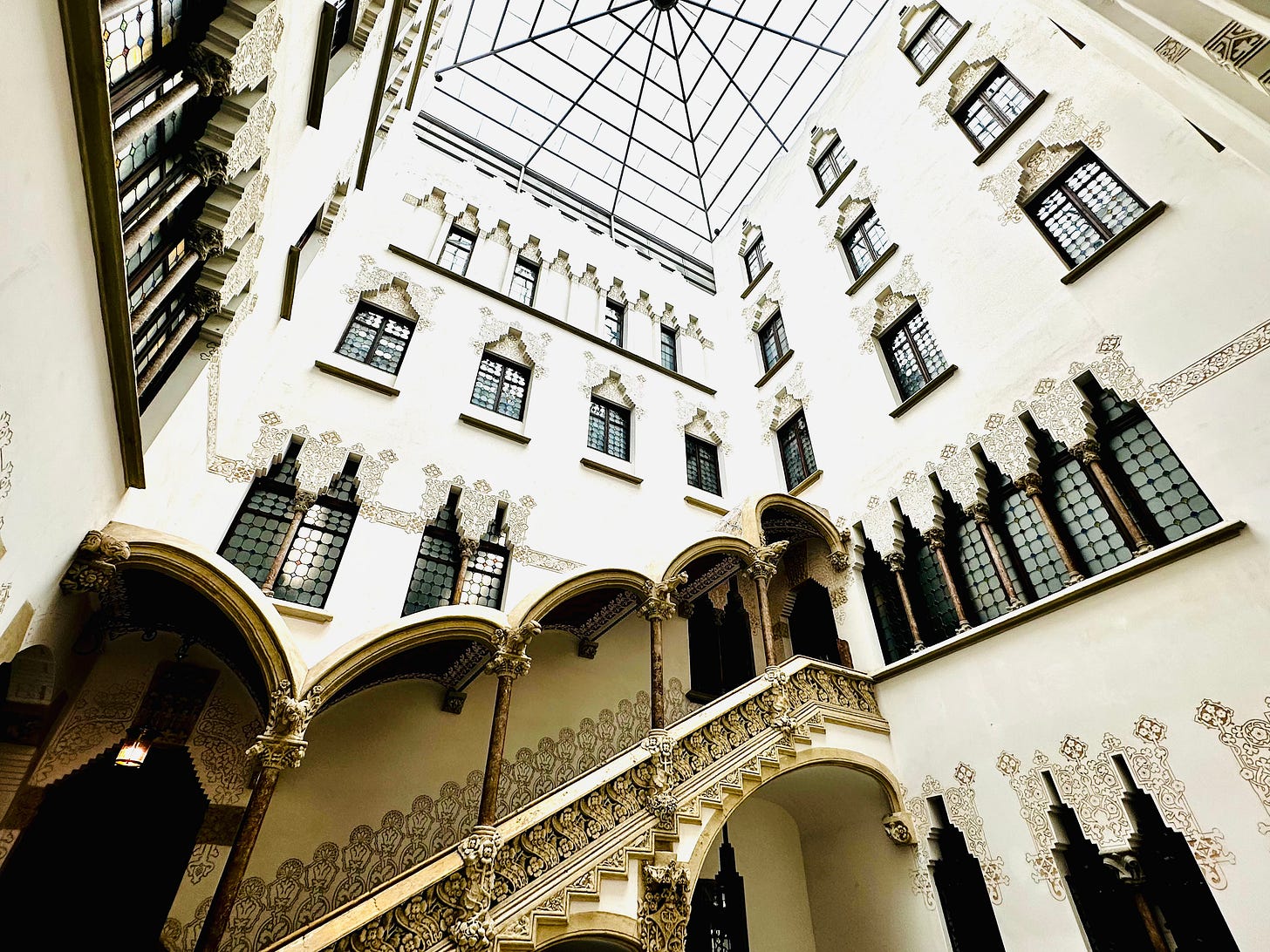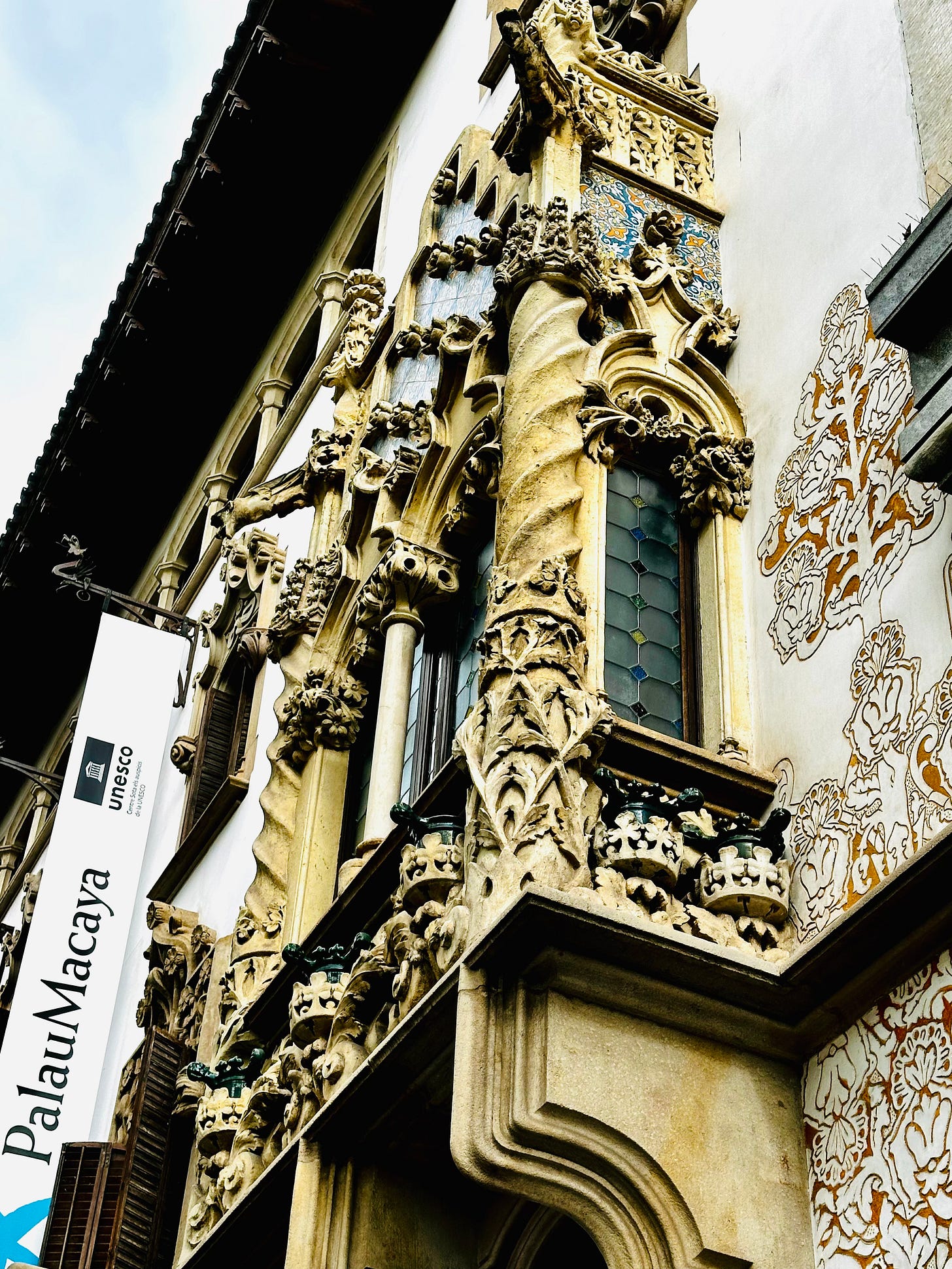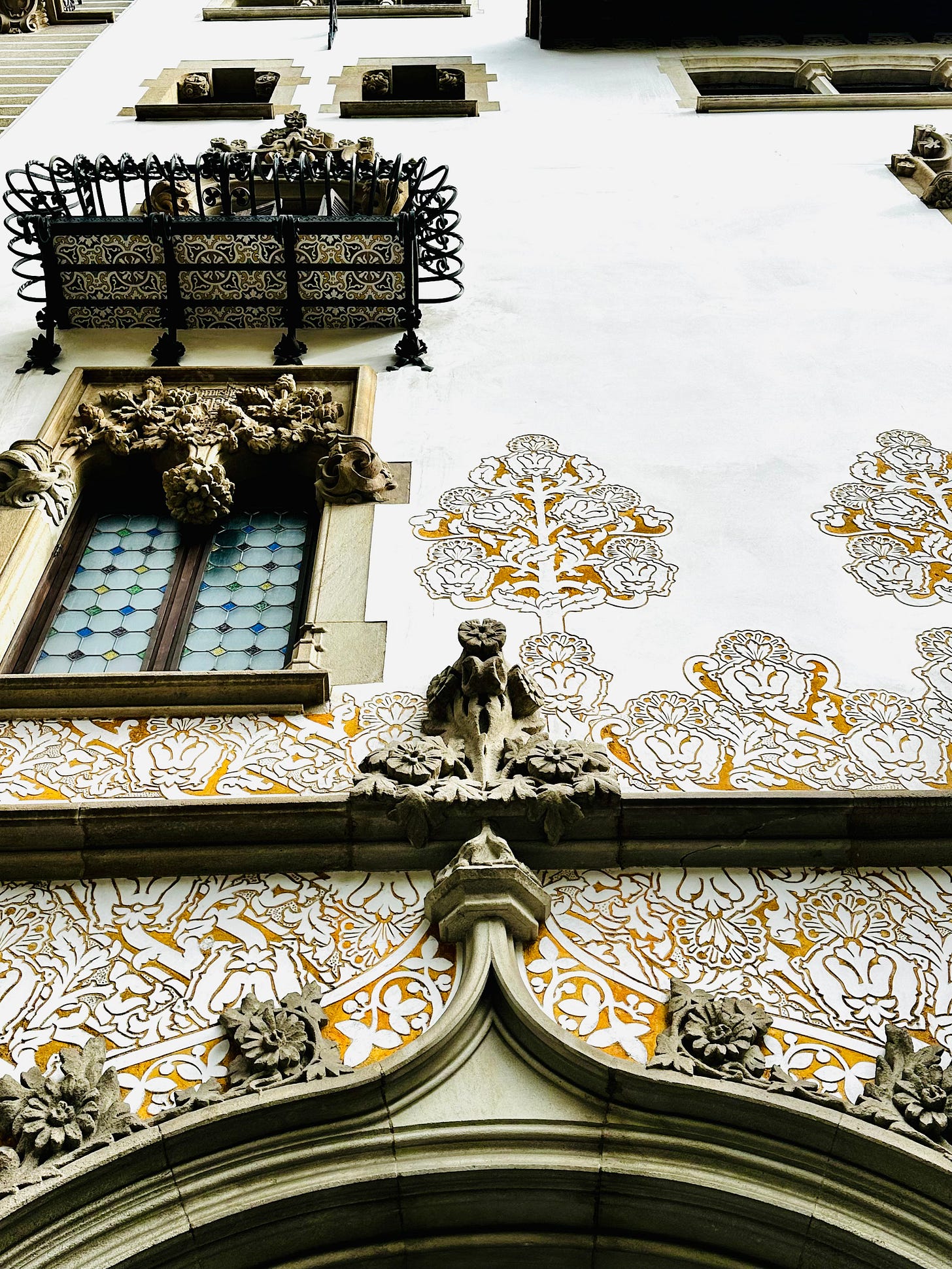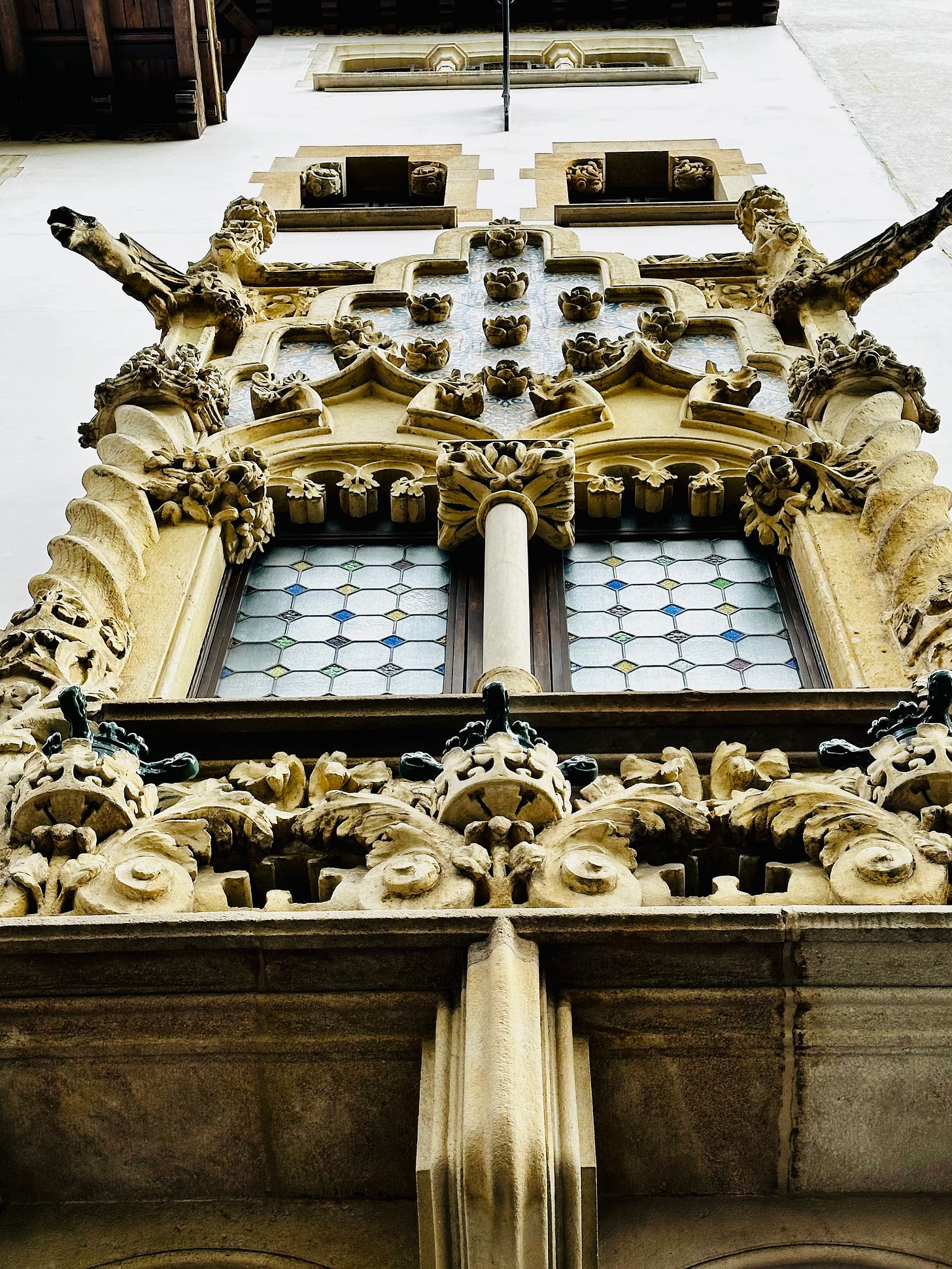Palau Macaya: Barcelona's Modernist Masterpiece by Puig i Cadafalch, Now a UNESCO Center
From Industrialist's Grand Residence to Global Think Tank: Exploring the Architectural History and Social Mission of Casa Macaya
The moment I stepped off the bustling Passeig de Sant Joan and faced the Palau Macaya (or Casa Macaya, as it was originally known), the sense of an arrested moment in time was palpable. Designed by the visionary Josep Puig i Cadafalch and completed in 1901 for the textile magnate Romà Macaya i Gibert, the building is a bold architectural essay, embodying the rich historical revivalism that defined its creator’s career.
To appreciate the Palau Macaya, one must first recognise the stature of its creator. Josep Puig i Cadafalch (1867–1956) was not merely an architect but a polymath: an art historian, politician, and one of the three principal figures of Catalan Modernism, standing shoulder-to-shoulder with Gaudí and Domènech i Montaner. Unlike Gaudí’s organic fantasia, Puig i Cadafalch often drew upon deep Catalan architectural traditions, particularly the Civil Gothic style, fusing them with the decorative richness and historical sensibilities of Modernism.
The construction of the Palau Macaya (1898–1901) falls squarely within the most prolific phase of his career. At the time, he was simultaneously finalising another of his most famous creations, the Casa Amatller on Passeig de Gràcia. This contrast is key: where Casa Amatller is a highly colourful, tiered fusion of Flemish and Catalan elements, the Macaya project is more stately, defined by its conscious tribute to the typology of Barcelona’s medieval palaces. It is an elegant testament to the versatility that allowed Puig i Cadafalch to design the neo-Gothic grandeur of the Casa de les Punxes and undertake major restorations like that of the Casa dels Canonges.
Keep reading with a 7-day free trial
Subscribe to TravelEssayist.com to keep reading this post and get 7 days of free access to the full post archives.








